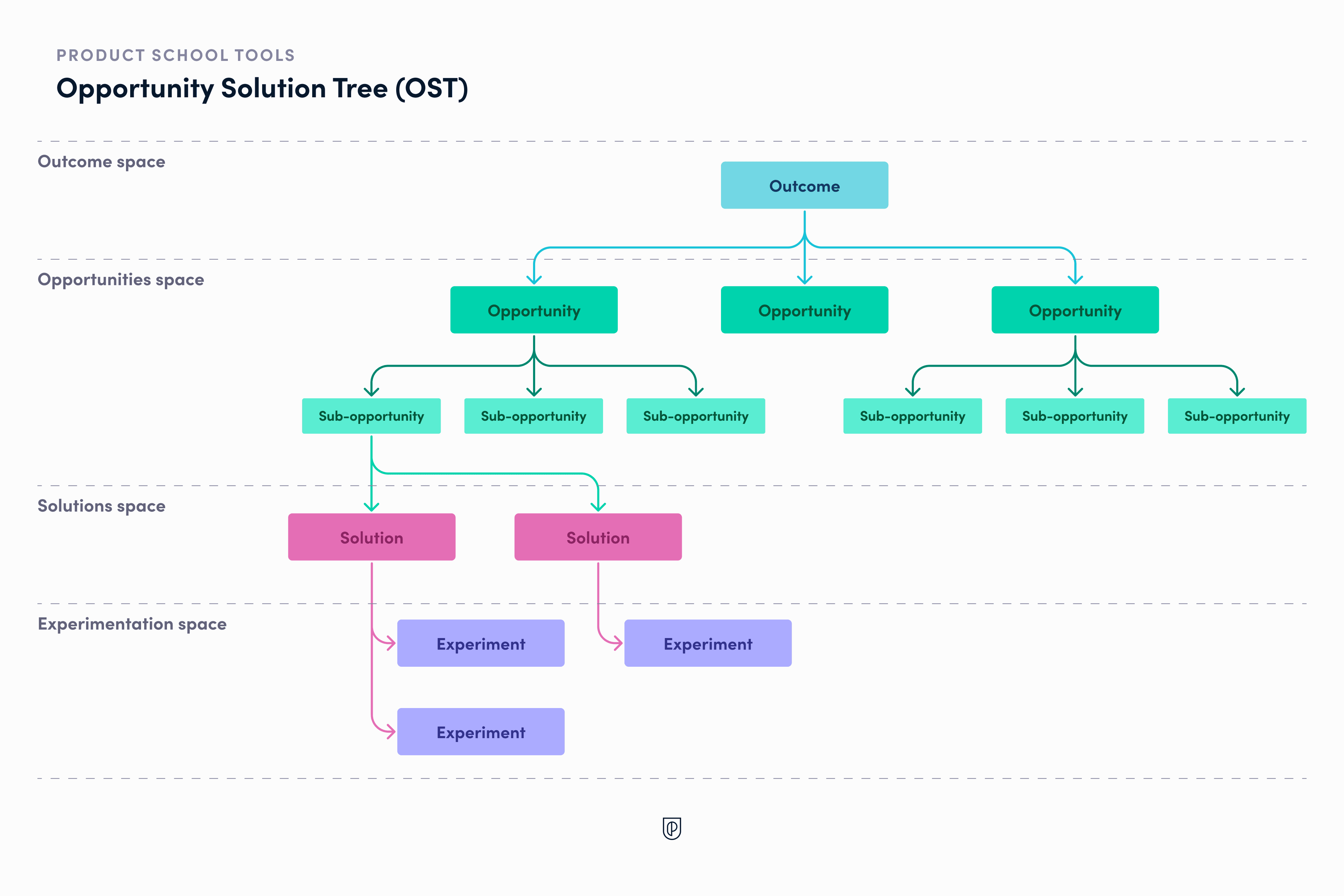Updated: August 27, 2025- 12 min read
“Output vs. outcome.” Sounds like simple semantics until you realize how often teams get stuck delivering outputs that fail to generate outcomes.
This isn’t a vocabulary lesson. In this article, we’ll break down the subtle but obvious difference, why it matters for product analytics, and how to steer clear of the trap of output obsession.
Clear, practical, and to the point — just like your outcomes (not necessarily outputs) should be.
Growth Metrics Cheat Sheet
Master the metrics you need to keep things moving 'up and to the right'! Our Growth Metrics Cheat Sheet covers 45 metrics to measure success at every stage—from acquisition to revenue and referral.
Get the Cheat Sheet
What Is the Difference Between Product Outcomes and Output?
The difference between product outcomes and outputs is that outputs are what your product team delivers, whereas outcomes are the change that delivery creates.
Outputs are things you build — features, updates, releases, or product documentation. Outcomes are the measurable impact of those outputs on user behavior or product goals — things like increased engagement, improved user retention, or higher revenue growth.
The difference between outputs and outcomes is critical because outcomes are the results that determine the success of a product. Confusing those with outputs will mislead product teams. So why is there so much confusion? Outputs are easy to spot. They’re concrete. You can point to them and say, “We shipped this.” But outcomes? Outcomes are about the why behind the work. They ask: “Did this thing we shipped make a difference for our users or our business?”
Think of it this way: you can ship five new features this quarter (output) but if none of your users care about them, and your key metrics don’t move, then the outcome will be nil.
Why this matters for product teams
Now, realistically, most teams don’t intentionally chase outputs at the expense of outcomes. It just happens. Outputs are easier to measure, track, and celebrate. Features shipped. Deadlines met. Velocity charts trending up. All clear signs of progress.
But none of that guarantees real impact.
Outcomes force you to stay honest. They ask whether the work is driving change where it matters:
Are users happier?
Are we solving real problems?
Is the business growing?
When teams anchor themselves to outcomes, they start making better decisions. They experiment more, they validate assumptions faster, and they stop burning time on features that sound good in a meeting but flop in reality.
Signs that your product-led organization is focusing on outcomes are:
You’ve adopted a product-led growth strategy and product-led growth metrics
You’re using OKRs instead of KPIs
You’re hiring data product managers, growth product managers, and product analysts
You’re using an outcome-based roadmap

Download a free outcome-based roadmap template from Product School's Product Roadmap Template Pack:
Product Roadmap Template
Download our easy-to-use template to help you create your Product Roadmap.
Get the Template
Outcome vs. Output: What’s the Difference?
Outputs are the things teams do. Think: features shipped, user guides written, or training sessions delivered. They’re tangible deliverables, but they don’t tell you if anything actually changed for the user or the business.
Outcomes, on the other hand, are the results those efforts produce. More users adopting the product, higher customer satisfaction, reduced churn. These are signs that your work is creating impact.
Let’s see more concrete examples.
Examples of Product Outcomes
Outcomes are all about the change you want to see after you’ve delivered something. They measure whether your product is solving real problems for users and driving business impact. Here are a few clear, specific examples of outcomes in product development:
More users complete the sign-up process successfully
For example, you redesign the sign-up flow and measure whether the percentage of users who finish the process increases from 60% to 75%.Increased product adoption of a specific feature
You launch a new collaboration tool within your app. Before, only 10% of users engaged with it weekly. After targeted improvements, adoption rises to 25%.Higher user retention over time
You introduce changes aimed at reducing churn, like better onboarding or clearer product value messaging. Retention improves from 80% to 88% over six months.Improved conversion rates on a key action
You tweak a pricing page or free trial prompt, and your conversion rate from free to paid users jumps from 3% to 5%.Reduction in support tickets related to a specific problem
You streamline a confusing feature, and over time, tickets about that issue drop by 40%, freeing up your support team to focus elsewhere.
Outcomes always tie back to user behavior or business performance. They show that something meaningful has changed thanks to your work.
Growth Metrics Cheat Sheet
Master the metrics you need to keep things moving 'up and to the right'! Our Growth Metrics Cheat Sheet covers 45 metrics to measure success at every stage—from acquisition to revenue and referral.
Get the Cheat Sheet
Examples of Outputs
Outputs are the things your product team builds and ships. They are tangible, easy to point to, and often celebrated because they’re visible progress. But on their own, they don’t tell you whether they worked. Here are detailed examples of outputs:
Released a new onboarding flow
Your team spent a sprint building and releasing a fresh onboarding experience, complete with new screens, tooltips, and tutorials.Launched a new reporting dashboard
You designed, coded, and shipped a dashboard that lets users visualize their data in new ways.Published a knowledge base
You created 50 new help articles to support users and published them on your website.Delivered a feature update for mobile
Your app now supports dark mode, after several weeks of design, development, and QA.Ran five customer webinars
You organized and delivered a series of live webinars for users to learn how to get more from your product.
Outputs are valuable because they create the potential for outcomes. They are means to an end. But without measuring whether they achieve the desired change, they risk becoming busywork.
Dangers of Focusing on Outputs
When teams fixate on outputs, it’s easy to lose sight of whether any of that work is making a difference. Here’s what this looks like in real life, drawn from the kinds of challenges product-led organizations face every day.
Building things no one uses
We’ve seen teams that spent months developing complex features simply because they were promised to stakeholders. When the feature launched, barely anyone used it. It looked great in a sprint planning, but it didn’t solve a real user problem. The output was delivered, but the outcome was zero impact.Chasing vanity metrics
There’s a temptation to celebrate “we shipped 20 features this quarter” because it feels like progress. We’ve seen teams report these numbers proudly, even as user engagement stayed flat. Output metrics can give a false sense of success while masking bigger issues like poor user retention or low product adoption.Burning time and morale on the wrong things
Shipping outputs without clear outcomes can wear down even the best teams. There are rooms where talented engineers were frustrated, asking: “Why are we building this if we don’t know if anyone needs it?” Output-driven work drains motivation because people want to solve real problems, not tick boxes.Delayed course correction
When all the focus is on delivering outputs, teams often wait too long to measure impact. We’ve seen products launch big updates only to realize months later they didn’t move the needle. By then, the budget and resources are already spent, and opportunities for smaller, faster experiments are missed.Strained stakeholder relationships
Leaders want results, not just activity. We’ve witnessed how delivering outputs that don’t lead to outcomes erodes trust with executives or investors. You can only say “but we shipped it on time!” so many times before people start asking tougher questions about value and impact.
These aren’t theoretical risks. They happen in real teams, on real products, when outputs become the measure of success.
Why Product Teams Fall Into the Output Trap
It’s not hard to understand why so many teams slip into focusing on outputs. It’s not because we don’t know better. It’s because outputs are clear. They’re visible. They’re easy to track, easy to celebrate, and they give everyone, from executives to individual contributors, a sense of forward motion.
“We shipped something.“ That’s progress… right?
That’s where it gets more complicated. In reality, most of us aren’t working in a vacuum. We’re inside systems shaped by legacy processes, habits, and pressures that naturally push us toward outputs.
If you’ve ever worked in a team where product roadmaps are defined 12 months in advance, where stakeholders demand updates in terms of features delivered, and where success is presented as “percent of roadmap completed,” then you’ve lived this.
Here’s exactly why we fall for the trap:
Outputs are easy to measure. Outcomes aren’t.
It’s much simpler to say “we shipped the dashboard” than to prove “the dashboard led to a 15% increase in user retention.” Outcomes often take longer to materialize, and they require a deeper commitment to measurement, product discovery, and iterative testing.Our environments reward outputs.
Executives ask for delivery timelines. Investors want to see movement. Stakeholders want the features they requested. When success is framed around outputs, teams naturally orient around shipping. It’s the path of least resistance.Outputs give us a false sense of certainty.
Roadmaps packed with features look good on slides. They feel solid. Concrete. Outputs create the illusion that we’re in control, that we can predict the future of our product. Outcomes — changes in user behavior, market shifts, real-world adoption — are messier. They’re harder to guarantee.We’re human. We want closure.
Shipping something lets us close the loop. It feels like an accomplishment. Outcomes ask us to keep watching, keep learning, keep adjusting. That’s uncomfortable. Outputs give us the dopamine hit of done. Outcomes demand patience and persistence.
It’s not black and white. Outputs matter. We need them to create the possibility of outcomes. But if we stop there, we’re not building products — we’re just shipping software. And deep down, we know we can do better than that.
How to Keep Your Team Focused On Measuring Outcomes

Juan Manuel Agudo Carrizo
Head of Product. Formerly at Real Madrid & eBay.
“A lot of our enterprise trainings at Product School address how to elevate outcomes over outputs. I think it is one of the critical parts of strategy. There are many frameworks out there, but I really like North Star metrics. Why? Because C-level decision makers are going to be looking at things like revenue, conversion, and other big KPIs.
It is your job as a product leader to translate those KPIs into actionable North Star metrics for your area. Then you empower your teams to choose the proxy metrics they can control and influence. If they develop something, it should have a measurable impact on that proxy metric, which ties back to the North Star.
It is the job of a manager of product managers, a principal product manager, or a director of product, to approve the KPIs that their PMs choose. Give them the bandwidth to choose the right metric, explain why they chose it, how they will influence it, and if it makes sense, align on it and set the proper goals. Those proxy metrics should then impact your North Star metric, and in turn, connect to the high-level metrics defined by your C-level stakeholders.”
Staying focused on outcomes isn’t something we solve with one workshop or a well-written OKRs. It’s a discipline, a set of habits we have to build into how we work, how we plan, and how we talk about success.
Here’s what helps — not theoretically, but in the mess of real teams building real products.
1. Start with clarity on what outcome you actually want
It sounds obvious, but it’s not. Too often we skip ahead to planning outputs. We say “let’s build this feature, let’s ship this update”, without getting clear on what change we’re aiming to create.
Are we trying to reduce churn? Improve activation? Increase user retention? You need to write that down. Make it visible. Make it part of how we start conversations, prioritize work, and review progress.
2. Use frameworks that force us to think in outcomes
North Star Metrics help teams identify a single, meaningful measure of long-term product success. This metric is tied directly to user value and company growth. Once established, product teams define proxy metrics they can control that ladder up to this central goal. North Star frameworks are especially useful for aligning multiple teams under a shared definition of progress.
OKRs (Objectives and Key Results) break outcomes into smaller, time-bound goals. The Objective defines what you want to achieve, and the Key Results describe how you’ll measure success. OKRs provide short-term focus and are great for setting quarterly targets. However, they’re most effective when tied to a larger outcome — like a North Star metric.
Opportunity Solution Trees visualize the path between a desired outcome and the possible solutions that could lead to it. They encourage teams to explore multiple options before jumping into delivery. OSTs are especially useful during discovery, helping teams connect problem spaces to outcome hypotheses and reduce the risk of tunnel vision.
Each of these frameworks plays a role in driving outcomes. North Star Metrics give you direction, OKRs provide structure and accountability, and Opportunity Solution Trees help you explore and validate paths along the way. Used together, they can help shift teams from output-focused to outcome-obsessed.

Opportunity Solution Tree Template
Branch out and discover something new with the opportunity solution tree. Visualize the product discovery process to build features that matter!
Get the template
3. Make outcomes part of everyday conversations
It’s not enough to write outcomes on a slide once a quarter. We need to bring them into sprint planning, roadmap reviews, stakeholder updates, retrospectives. Ask: “How will this work help us move this outcome?” Not: “How quickly can we ship this feature?”
That shift in language reinforces where our focus belongs.
4. Measure what matters and share it
Teams need feedback loops. Fast ones. If we can’t see whether our work is moving the adoption metrics that matter, we’ll drift back to outputs because they’re easier to count.
Set up dashboards that show adoption, engagement, retention and make them visible. Celebrate wins based on those numbers, not just releases shipped.
5. Empower teams to experiment
When teams own outcomes, they also need the space to figure out how to achieve them. That means less top-down “build this exact feature” and more trust in the team to run experiments, learn from users, and adapt.
Autonomy fuels creativity, and creativity focused on outcomes leads to better products.
6. Stay uncomfortable with easy answers
Outputs feel certain. Outcomes are harder. They force us to ask tough questions: “Is this really working? Are we solving the right problem?” That discomfort is healthy. It keeps us learning.
If we notice our team feels too confident because we’re hitting all our delivery dates, it’s worth pausing to ask: are we hitting the outcomes we care about, too?
The Output Versus Outcome Debate Matters
Outputs will always have their place. But if we stop there, we’re missing the point of product work entirely.
The teams that build products people love and businesses that thrive aren’t obsessed with how much they’ve shipped or how effortful it was. They’re obsessed with outcomes. They are interested in work that’s making a difference.
That’s the mindset shift that separates busy teams from impactful on
Keep that front and center, and your product roadmap gets a whole lot clearer.
Opportunity Solution Tree Template
Branch out and discover something new with the opportunity solution tree. Visualize the product discovery process to build features that matter!
Get the template
Updated: August 27, 2025





